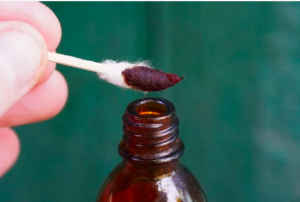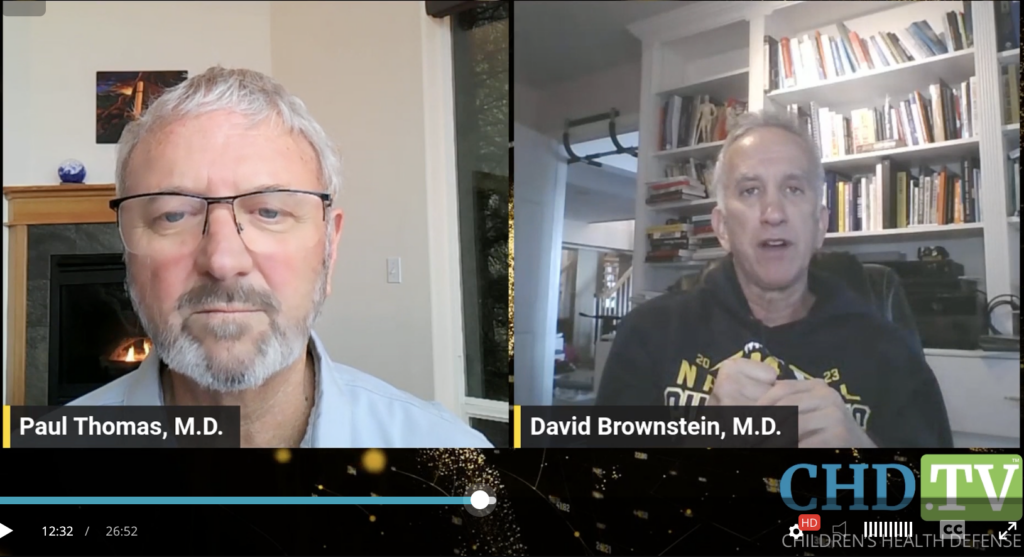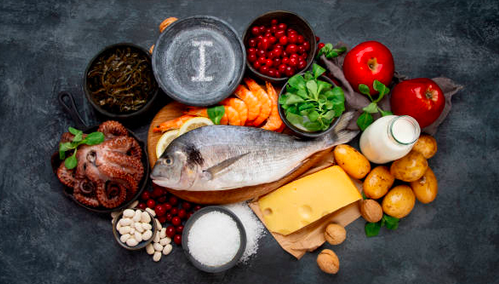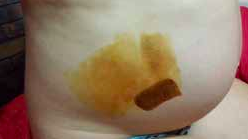Iodine: The Misunderstood Nutrient
Likely if you know about iodine, you think taking iodised salt is enough. Traders all through history have carried salt as it i s a commodity sought after away from the coasts – or mountainous salt mines, We all salt our food – as a taste enhancer/we like it. In the recent past, the manufacture of stuff for sale has mean that unnatural substances are making their way into out bodies,. Disrupting how we work. Giving rise to all sots of problems (cancer being a large one – in the breast especially – and ‘killing’; the body’s reaction is not as sensible as undoing why the body is warning us. Displacing a crucial nutrient buy halides – predominantly what is placed in water – chlorine and FLUORIDE – and throughout our lives – BROMIDE is the issue more than having it on present – or even taking it orally or painting it on the skin as it seems only I suggest .. See more here. Serious as so many think taking an iodine tablet, or some drops daily is sufficient. Not knowing that the core of their health dramas is a matter of their being in a relative state of deficiency. Iodine uptake this is being blinded in our lives – and that is story go HALIDES . .

Iodine: Although needed in only minute amounts, iodine is essential for numerous biochemical processes, such as fat metabolism, thyroid function and the production of sex hormones. Muscle cramps are a sign of deficiency as are cold hands and feet, proneness to weight gain, poor memory, constipation, depression and headaches. It seems to be essential for mental development. Iodine deficiency has been linked to mental retardation, coronary heart disease, susceptibility to polio and breast cancer. Sources include most sea foods, unrefined sea salt, kelp and other sea weeds, fish broth, butter, pineapple, artichokes, asparagus and dark green vegetables. Certain vegetables, such as cabbage and spinach, can block iodine absorption when eaten raw or unfermented. Requirements for iodine vary widely. In general, those whose ancestors come from seacoast areas require more iodine than those whose ancestors come from inland regions. Proper iodine utilization requires sufficient levels of vitamin A, supplied by animal fats. In excess, iodine can be toxic. Consumption of high amounts of inorganic iodine (as in iodized salt or iodine-fortified bread) as well as of organic iodine (as in kelp) can cause thyroid problems similar to those of iodine deficiency, including goiter.
Iodine for Estrogen balance, prostate and fibrocystic disease
I do seem to be the only person who is using this topically . . It does work!! Maybe start with what Dr Sircus has posted.
Especially if in any doubt as to dosage . .
Why a body needs it All cells – not just the thyroid – so if you think ‘but I have no thyroid gland – think again
Perhaps start here – a 16 minutes presentation to help you understand all that you need about iodine and why our bodies need it not just for breast and uterus health, but also metabolism, diabetes – and all other aspects to metabolism.
Iodine is one of the minerals essential for good health. It also protects against the fluoride that is being given to all in the water – without good reason. A great book to buy that will answer a lot of your health and not well being issues – ‘The Iodine Crisis’
Cancer avoidance . . all cells need iodine to allow aptoptosis – programmed cell death . . Humans tolerate large doses of iodine – 100 times more in Japan than in the USA – (on the skin) but the ultra high doses that were used many decades ago are not required to get the most out of iodine therapy.
Iodine can protect babies against autism. How? A healthy functioning thyroid allows for the adequate detoxing of heavy metals, of which there are far too many in the modern environment. See here for even more on preventing and assisting autism – magnesium WITH iodine.
Just a little goes a long way as the governmental iodized salt programs showed, but this dosage level was only affective for Goiter and its avoidance. It actually takes very little iodine to prevent this disease but no one ever said that was the only purpose and need for iodine in the body. Today people are more deficient then ever before because our need for iodine has increased in direct proportion to our toxic burdens especially of other competing halogens. Iodine and preventing cancer (http://www.westonaprice.org/metabolic-disorders/the-great-iodine-debate) More on iodine here Watch this hour presentation on the importance of Iodine and preventative medicine.
For all those who have been told that their thyroid tests are ‘normal’ – an essential tool – and when I watched it although it is SO important – only 8,600 watches – so few are aware!! See what Dr David Brownstein has to say about the importance of iodine. Yet we have fluoride?
Endometriosis? PCOS? Estrogen seems to be indicated in a likelihood of low thyroid function. The more excess your estrogen is, the more likely you are to end up with cancer of the female organs later. Iodine and Vit D3 are parts of the arsenal you could use in preventing disease.

VERY USEFUL VIDEO OF DR BROWNSTEIN IN 2025 on Children’s Health Defense.
Iodine is an essential element
Iodine is a chemical element necessary for proper body and brain function. Specifically, iodine is essential for the production of the thyroid hormone. The body does not make iodine, therefore it is necessary for children and pregnant mothers to consume iodine in their diets to prevent the development of conditions like hypothyroidism, goiter and pregnancy-related illnesses.
Iodine is found in seafood, iodised salt and some vegetables. It is important for essential hormone development in the human body. Inadequate intake of dietary iodine can lead to an enlarged thyroid gland (goitre) or other iodine deficiency disorders. Iodine deficiency is the world’s leading cause of mental retardation in children. Read more about adequate iodine intake. When nothing else works – try iodine
Causes of Iodine Deficiency
Children who are iodine deficient do not consume enough iodine in their diets. Most food products in the USA do not label the amount of iodine on the package, thus making it difficult to assess how much iodine a child is consuming. Children can maintain an adequate amount of iodine by using iodized table salt in their diets. Other common sources of dietary iodine include breads, cheese, saltwater fish, cow’s milk, eggs, shellfish, soy milk, ice cream, soy sauce and yoghurt. The Institute of Medicine recommends an intake of between 110 and 130 mcg for infants up to 12 months old, 90 mcg for children between the ages of 1 and 8 years old and 120 mcg for children between the ages of 9 and 13. BUT – the halides in free supply overtake/block this – as does the mercury and other loadings we are not designed to live with – maybe seek more here?
Goiter
Goiter is the enlargement of the thyroid gland as a result of iodine deficiency. The goiter continues to enlarge in an attempt to compensate for the large demand of thyroid hormone. Goiter appears a growth in the neck region and may contain nodules. Children with goiter may develop symptoms of choking or experience trouble swallowing and breathing.
There are several reference points we can use to plot out iodine dosages for a variety of disorders that beg for the use of iodine for successful treatment. For whatever irrational reason, doctors and patients fear iodine thus en mass do not use to its fullest potential.
Hypothyroidism
Hypothyroidism is a condition defined by the thyroid gland’s inability to produce essential hormones. Iodine is necessary to produce thyroid hormones, therefore an iodine deficiency can lead to hypothyroidism. Hypothyroidism rarely causes symptoms in the early stages, but if left untreated it can cause a number of potentially serious health conditions.
Symptoms associated with hypothyroidism include:
- fatigue,
- increased sensitivity to cold,
- constipation,
- a puffy face,
- hoarse voice,
- elevated blood cholesterol level,
- unexplained weight gain,
- muscle aches,
- stiffness or swelling in joints,
- heavier than normal menstrual periods,
- brittle fingernails and hair, and
- depression.
Pregnancy Related Illness – mal nutrition
Pregnant or nursing mothers who do not get enough iodine in their diets may experience miscarriage, stillbirth, preterm delivery and congenital abnormalities in their babies. Children may later develop severe developmental problems such as mental retardation and problems with growth, hearing and speech. According to The American Thyroid Association, even a mild iodine deficiency in pregnant mothers may be associated with lowered intelligence in their children.
Diagnosis and Treatment
Iodine deficiency is measured as a median urinary iodine concentration of less than 50 mcg per liter in a population. There are no tests to determine if individual children have enough iodine in their bodies. Iodine deficiency is treated by incorporating sources of iodine into the child’s diet or by taking multivitamins which contain iodine.
References
- Reuters.com; Treating Mild Iodine Deficiency Boosts Brain Power
- American Thyroid Association; Iodine Deficiency
- ThyroidManager.org; Chapter 20. The Iodine Deficiency Disorders; Creswell Eastman, Michael Zimmermann
- MayoClinic.com; Hypothyroidism; June 2010
If you are intrigued and wish to know how to help yourself – there is a comprehensive set of eBooks in my Nourishing YOU package which covers how a well body works, and how you can Love Your Body Better, plus LIFE Essentials. Below – foods rich in iodine. And topical application – this shocked me – the speed to which the body took it in – all these stripes were within 3 minutes of each other. The initial patch was darker than the brown one you can see. IT takes time to get the camera ready. The yellowing shows how depleted the body was. Topical is using 15% Lugol’s solution. Not less than – although it will have some effect. NOT Betadine has it has been processed so we do not absorb it.


Learn how your body supports itself, regenerates and fuels life
The “Nourishing YOU!” package will give you an understanding of how a well body works and how you can repair yours – simply by eating differently.
- Love Your Body Better – a look under the hood/bonnet . .
How a well body sustains life and how to enhance your food factory, so it supports healing and life so much better. - LIFE Essentials – nutrients how your body uses the and why they are crucial to life.
Discover why each nutrient is needed, how to access it and what to expect.
